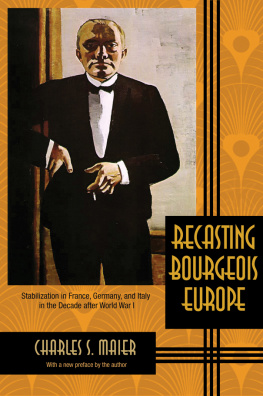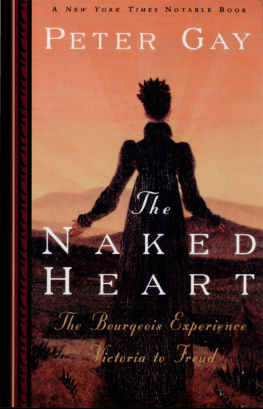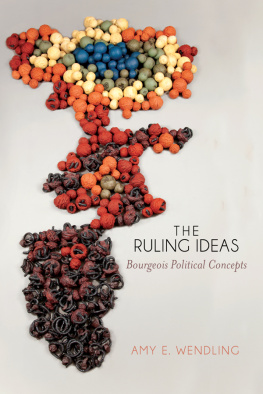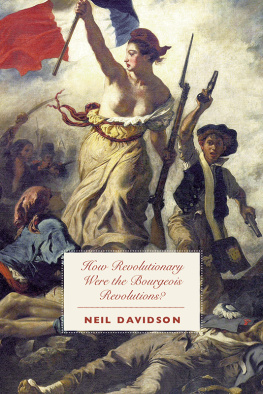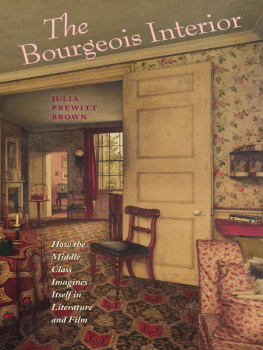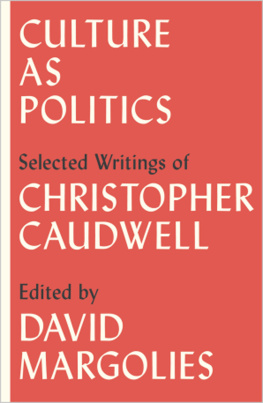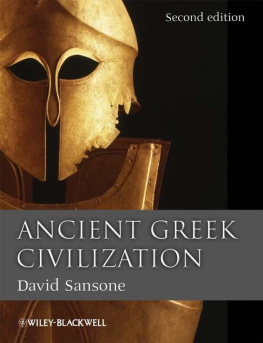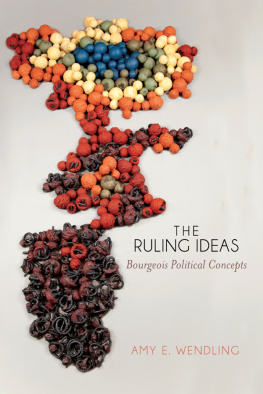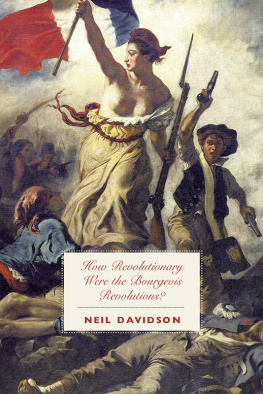1. Introduction
1.1 City and Civilization
Among the artist Paul Gauguins many strange adventures in Tahiti, he recalls that of being thought of a useful human being. A young native had watched him carving a figurine and finally declared that he, Gauguin, was useful to others. Gauguin could hardly believe his own ears: I believe Totefa is the first human being in the world who used such words towards me. Hadnt Gauguin been taught to regard art as wonderfully detached, beautifully impractical, a rebuke to utilitarian philistines everywhere? And yet he was charmed by this odd new idealets call it the Totefa Hypothesis: that art and artists might be useful components of society.
How art indeed is useful to civilization, and one civilization in particular, is the subject of this book. Many have been the forms and uses of art in western societies; many have been the mentalities and sensibilities speaking through them. The aim of this book is to chart a direction through this multitude, starting with ancient Greece, tentatively through the long Middle Ages, then decisively after the Renaissance. I call it a direction, not an order, because it isnt primly foreordained. Yet a direction it is, which, to put it briefly, tends toward the rationalization of mentalities. Imaginary and fictive as works of art may be, I argue that, so far as our civilization goes, they have served a demystifying function advancing a rationalized (some say disenchanted, others bourgeois) frame of mind which, in the specific sense detailed below, we shall call civilized.
The word civilization, coupled with the adjective western, has of late come under the suspicion that it truckles to an exclusivist view of European superiority. The unfortunate obverse of civilized that springs to mind is savage, primitive, barbarian. This, needless to say, isnt the semantic binary in which I wish to put the word civilization. Nor, in fact, will my use of the term rest on the meaning given to it by nineteenth-century historians, to designate large-scale clusters of cultures held together by geography, religion, and customs. Though this technical definition of civilization does circumscribe the geopolitical area of my survey, I will actually prefer a more humble, yet sociologically pertinent and etymologically correct, use of civilizationone that cracks its abstract shell and brings out the socio-lexical nugget: civilization is per verbum that which pertains to the city. It is the mix of beliefs, attitudes, mores, practices, economic habits, and moral sensibilities that associated with city life. Actually civilization elbows its way into the English lexicon in the chaotically urbanizing eighteenth century. The word evoked the effects of bringing people out of rusticity and inducting them into the ways of town-living. Civil, civility, civilian, civilized, and civilization are whatever happens when Homo civitatis , the town-dwelling creature, replaces Homo agri , the agriculturalist, on the cultural drivers seat. And what has been happening in the city with many false starts and detours since 5000 years ago in the lowlands of Mesopotamia is the development, exchange, multiplication, and hybridization of ideas, technologies, systems of thoughts, religions, and polities. The city is where the division and diversity of labor is most developed, where commercial networks are densest and busiest, where political power, administrations, systems of record-keeping and accounting congregate, as well as the education apparatus, the literacy and numeracy to run them. A city, in sum, is where culture adopts managerial and argumentative methods to its own maintenance.
The word culture often appears in duality with civilization, and so we a pause to explore their disjunction. It goes back to a polemic begun by German romantics of the late eighteenth century. Kultur , in their scheme, was the native, ancestral, nave, and wise ways of a locality, a folk, an ethnicity, a kin group. At the opposite end, Zivilization was cosmopolitan, rootless, abstract, impersonal, and deplorably French. Zivilization was the Enlightenment, reason, the demystifying Encyclopdie , the technocracy, Paris; it was fretful, knowing, and cynicala far cry from the shire, the glen, and the clan of Kultur , as sheltering and solid as the German forest. This invidious distinction between (overweening, judgmental, rootless, and artificial) civilization and (sincere, natural, communal, and colorful) culture is one of the more durable exports of romanticism. Civilization conjures up the image of an imperialistic juggernaut trampling over regional pluralities, crushing local colors and colored people with the myth of its own pre-eminence, and digesting every neighbor it comes across. Next to it, culture seems a model of pacific non-interference. Though not necessarily tolerant, a culture revolves around concrete practices, interactions, and interests. It is too local and self-referential to meddle with other cultures, and seldom devises policies to formulate and impose itself universally.
These, broadly, are the lines of the Zivilization - Kultur feud, whose merits this is not the place to discuss. Suffice it to remark upon one useful facet of the dichotomy, which is that civilization tends to articulate its identity and explain itself to its members, arguing about its values in a way that a culture, by nature more autarkic, doesnt, or does but to a much lesser degree and less critical extent. And when we consider what the romantics had primarily in mind when lambasting civilization we supposedly the big, bad, bustling, countrysides civitas the arrogantly cosmopolitan city that sucks up all the bounty and gives nothing but unwanted advice in return.
Civilization, given a strictly sociological perspective, is the culture of the city. It is what happens to culture when it makes a city its port of call. And the city is first of all dense interaction between people, trades and occupations. This is where forms of life and belief become cognizant of one another and start a mad competitive race. As the division of labor ramifies, and the contest between economic sectors heats up the rate of innovation springs to life. Rural neighboring communities do swap ideas, of course, but these tend to be of a similar stamp and involve variants of ideas already extant. Genuine new springs of information open up when commerce and industry bring together people from far and wide. In the urban lattice-work of information, knowledge grows more voluminous and varied, it challenges itself on the agora, the forum, or the commons. Thus something happens to the quality of urban-based knowledge: it tends to be more context-independent and critically aware of itself. Knowledge gets defined as a technical, demystified means . Citied culture is culture becoming instrumental, objectifiedas some say, uprooted.
This uprooting, it appears, is at the origin of all major civilizations identified by longue dure historians (Arnold Toynbee, Pitirim Sorokin, Alfred Kroeber, Caroll Quigley, Jean Bodin, Fernand Braudel). Whether Mesopotamian, Egyptian, Sinic, Indic, Greek, Roman, Christian, Arabic, Khmer, and Mesoamerican, all these civilizations radiate out of, or graft themselves onto, urban hubs. Of course the kings court had its revenge in the sixteenth and seventeenth centuries but eventually, with the commercial age, the city did citify the martial and ecclesiastical elite, then the countryside and the state at large, creating what the German romantics called the poison of civilization: a society that maintains a skeptical, utilitarian, rationalizing stance vis--vis its own lifeways, an imagined community made up of citi-zens who (unlike deni-zens, or denisein , e.g., acculturated indwellers) stand inside and outside at the same time, looking outward, looking inward, never entirely and reliably autochthonous.



